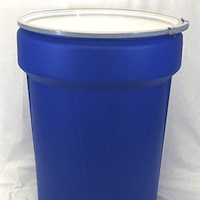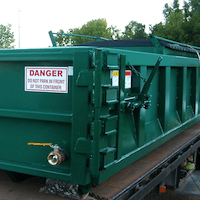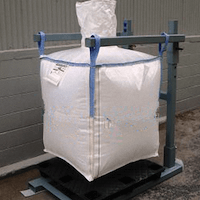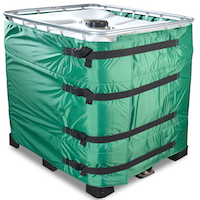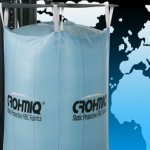Bulk Bags (FIBC) – Super Sacks | Benefits of Using
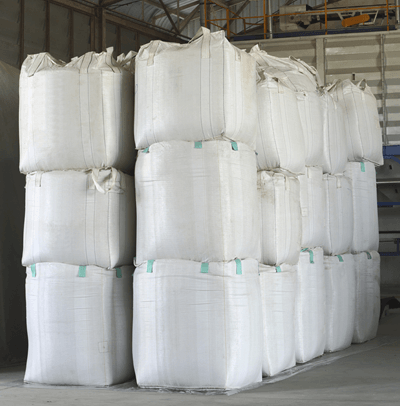
Bulk Bag Storage
Flexible Intermediate Bulk Containers – or Bulk Bags are an excellent and efficient method for packaging, storing and handling a very broad range of products in use by almost every type of market or industry. Sizes can vary greatly and hold thousands of pounds of material.
Usage Example: Recently an end user needed a small quantity of Bulk Bags capable of handling 5,000 lbs. of dry soil. We determined the bulk density will require a 36″ X 36″ X 50 or 52 inch tall bulk bag. We suggested a stock bag as the applications will not require sift proof seams, non coated and no liner at 4,000 lb capacity to stay within a 5:1 safety factor with a duffle top and plain bottom. We provided detailed specifications and the rationale behind each aspect. The end users engineers agreed and are testing a sample. We also recommended aspects of proper and safe handling with a crane and/or fork lift.
 Offering over 150 of the most popular sizes and styles to meet every requirement, plus custom where required. Used FIBC’s are also stocked: When transporting bulk bags filled with a product, bulk bags are easily move to and from a truck or trailer, fork lifted or conveyed exactly where they are needed, and then quickly emptied. In some applications they are emptied directly into the processing equipment. Facilities use the FIBC’s for shipping, storing and dispensing products. Standard or special spouts can be made to order to ensure quick, no-spill filling or discharge of contents. The application list and usage is endless.
Offering over 150 of the most popular sizes and styles to meet every requirement, plus custom where required. Used FIBC’s are also stocked: When transporting bulk bags filled with a product, bulk bags are easily move to and from a truck or trailer, fork lifted or conveyed exactly where they are needed, and then quickly emptied. In some applications they are emptied directly into the processing equipment. Facilities use the FIBC’s for shipping, storing and dispensing products. Standard or special spouts can be made to order to ensure quick, no-spill filling or discharge of contents. The application list and usage is endless.
General Bag Specifications (Sizes and Uses)
Multi-Trip: Bulk Bags can be made as “Standard Duty Reusable” , Multi-Trip FIBC with a 6:1 Safety factor.
Food Grade: Bulk Bags can be manufactured as “Food Grade”. All the materials used in the manufacturing of “Food Grade FIBC’s are approved by the sanitary authorities
UN Certified FIBC: The United Nations recommendations on the transport of dangerous goods – established in the Orange book is divided into six categories and a number of UN tests must be made.
See Conductive or Anti Static Bulk Bags. Bag products specifically designed to avoid accidents caused by any type of electrostatic discharges.
Type of Bulk Bags and their Antistatic Properties:
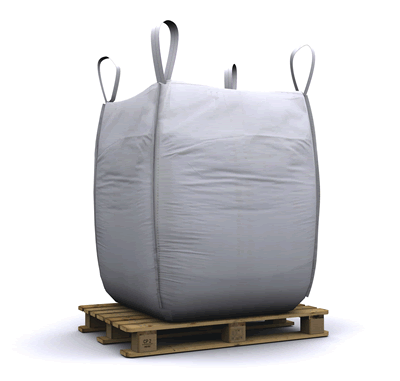
Custom Bulk Bags
Type A: Has no special static protection, should not be used where a flammable atmosphere is used.
Type B: Is made from insulating fabric, has a voltage range of less than 6 KV. Can be used if MIE of flammable atmosphere is above 25 meters.
Type C: Is made from fabrics that have inter-connected static dissipative or conductive threads (groundable).
Type D: Is constructed from fabrics with static dissipative properties or threads to control fire-starting of discharges regardless of weather electrically grounded or ungrounded.
UN Certified Bulk Bags: UN Certified Bulk Bags have a 6:1 Safe Working Load, the Standard Safe Working Load is 5:1
For more information on Bulk Bags – click below to follow these links:
View Bulk Bag Glossary of Terms
Benefits of Bulk Bags:
- When the customer receives a bulk bag filled with a product, it is easily picked off the truck or trailer, fork lifted or conveyed to exactly where it is needed, and then quickly emptied when and where desired.
- Many users empty directly into processing equipment.
- Customers use the FIBC’s for shipping, storing and dispensing products.
- Standard or special spouts can be made to order to ensure quick, no-spill filling or discharge of contents.
- The application list is endless.
Bulk Bag History:
Flexible Intermediate Containers Bulk Bags or Flexible Intermediate Bulk Containers (FIBCs) are an economical and efficient way to package, store and handle products. A flexible intermediate bulk container (FIBC) is defined as an intermediate bulk container, having a body made of flexible fabric, which cannot be handled manually when filled, it is intended for shipment of solid material in powder, flake, or granular form and does not require further packaging. They are designed to be lifted from the top by means of integral, permanently attached devices (lift loops or straps.) Flexible intermediate bulk containers.(FIBCs), also known as big bags, bulk bags, and bulk sacks were first manufactured in the late 1950’s or early 1960’s. There is some controversy as to where the first FIBCs were made; however, it is known that FIBCs were made in the United States, Europe, and Japan during the time period mentioned above. The first FIBCs were constructed with heavy-duty PVC-coated nylon or polyester where the cut sheets are welded together to form the FIBC. These FIBCs were made with integrated lift slings around the container, or attached to a specially made pallet, or a metal lifting device that the container sat on. The handling devices allowed the container to be filled from the top and discharged from the bottom.


 P.O. Box 8149
P.O. Box 8149